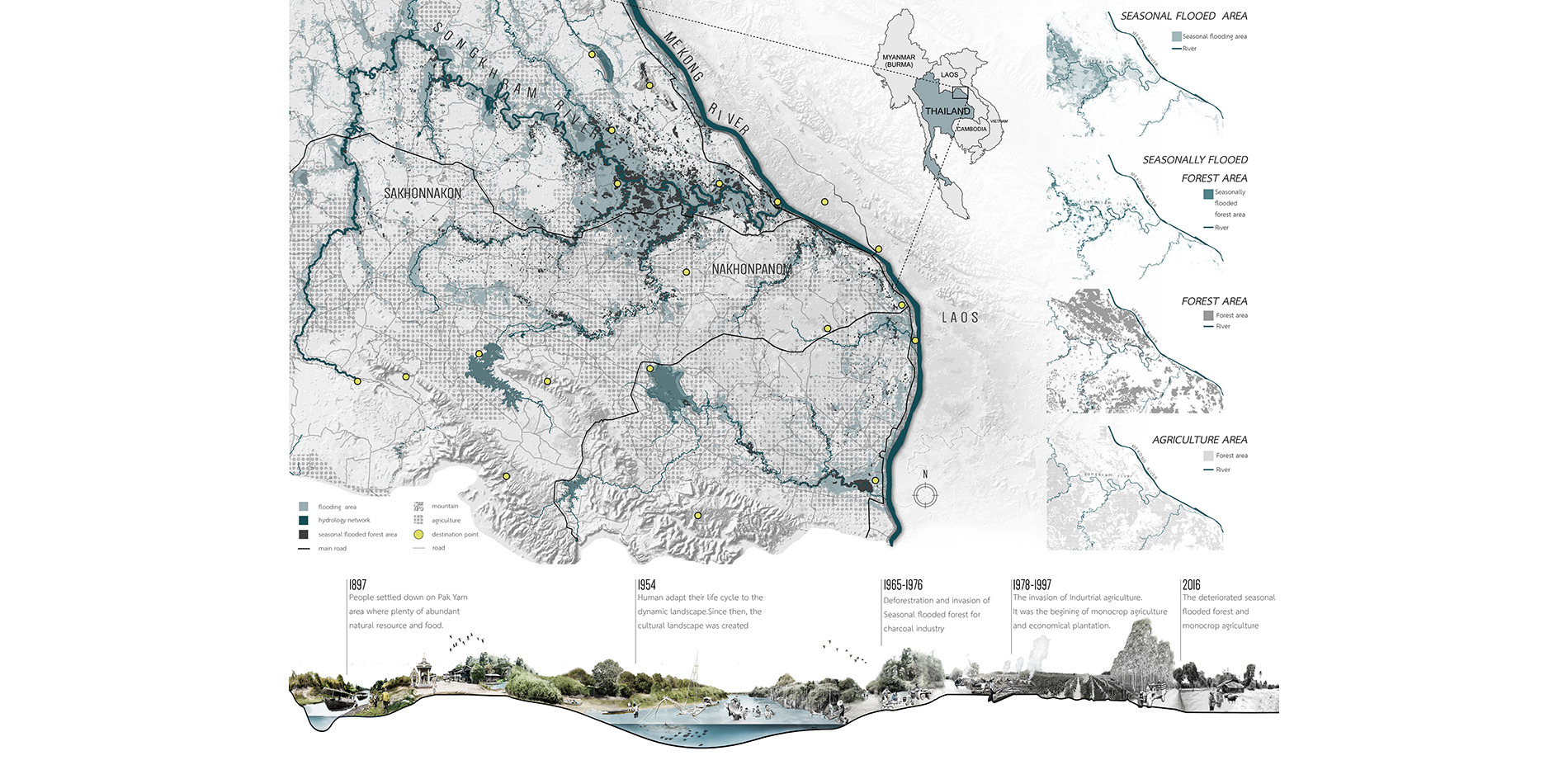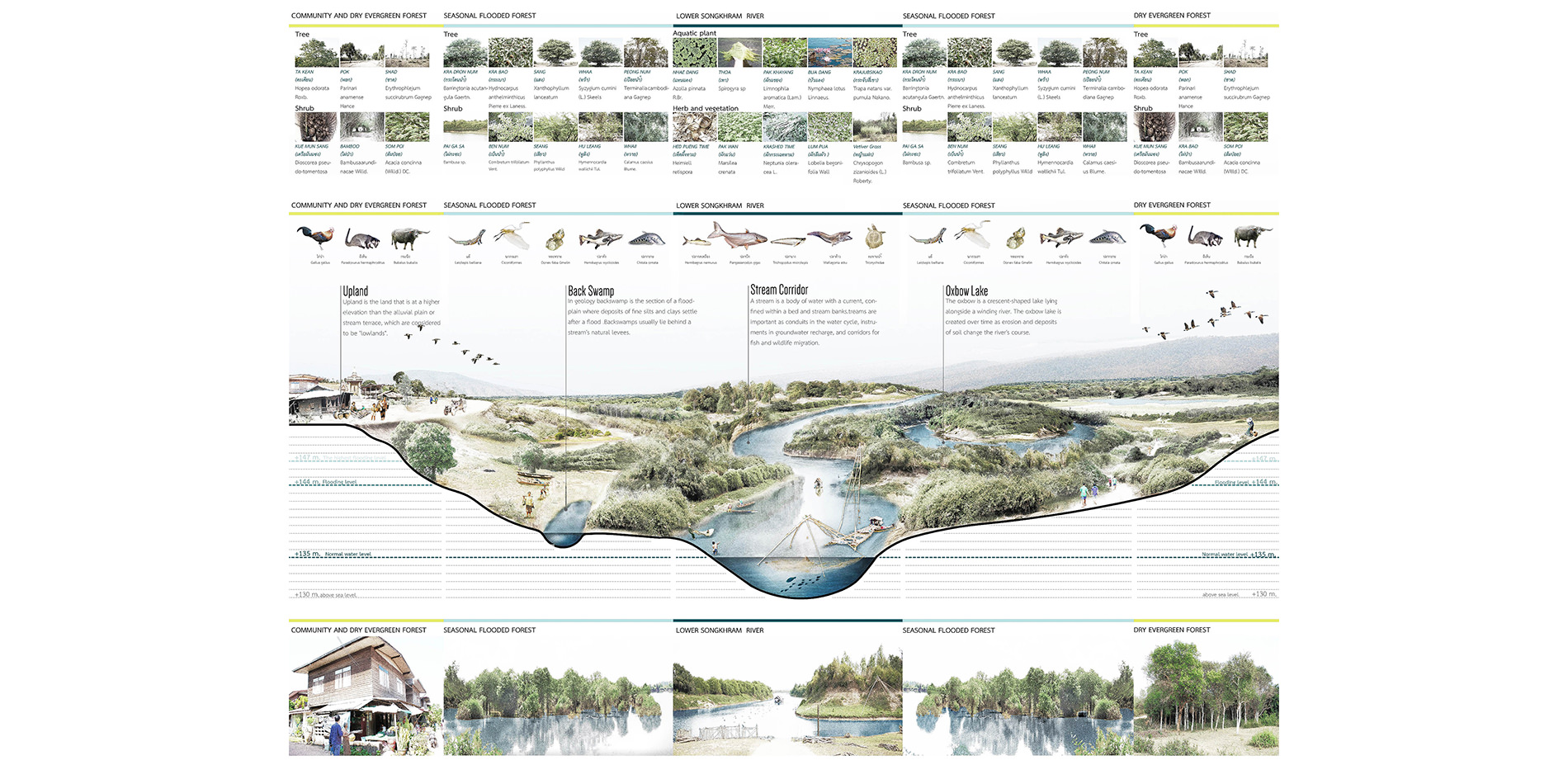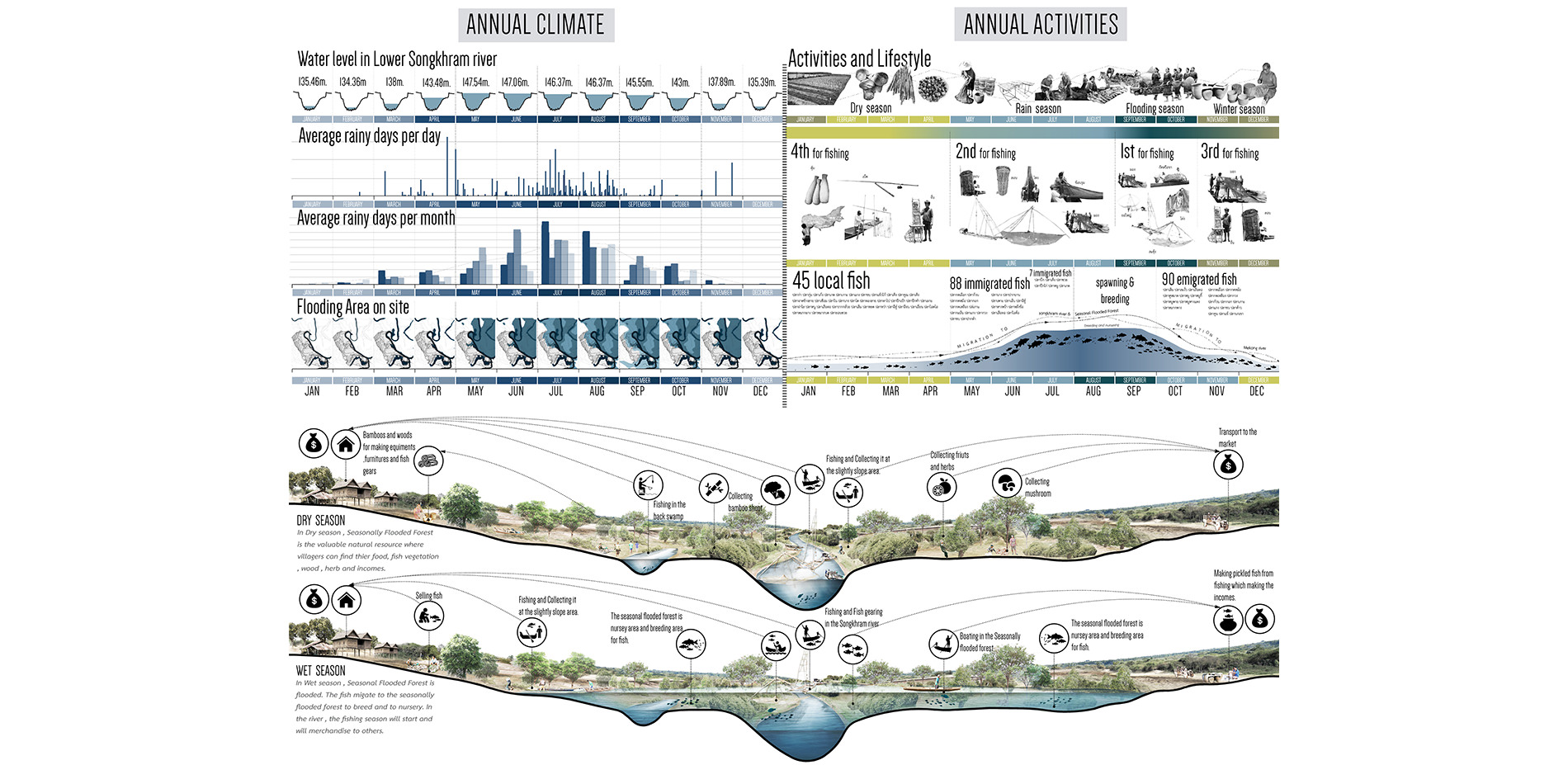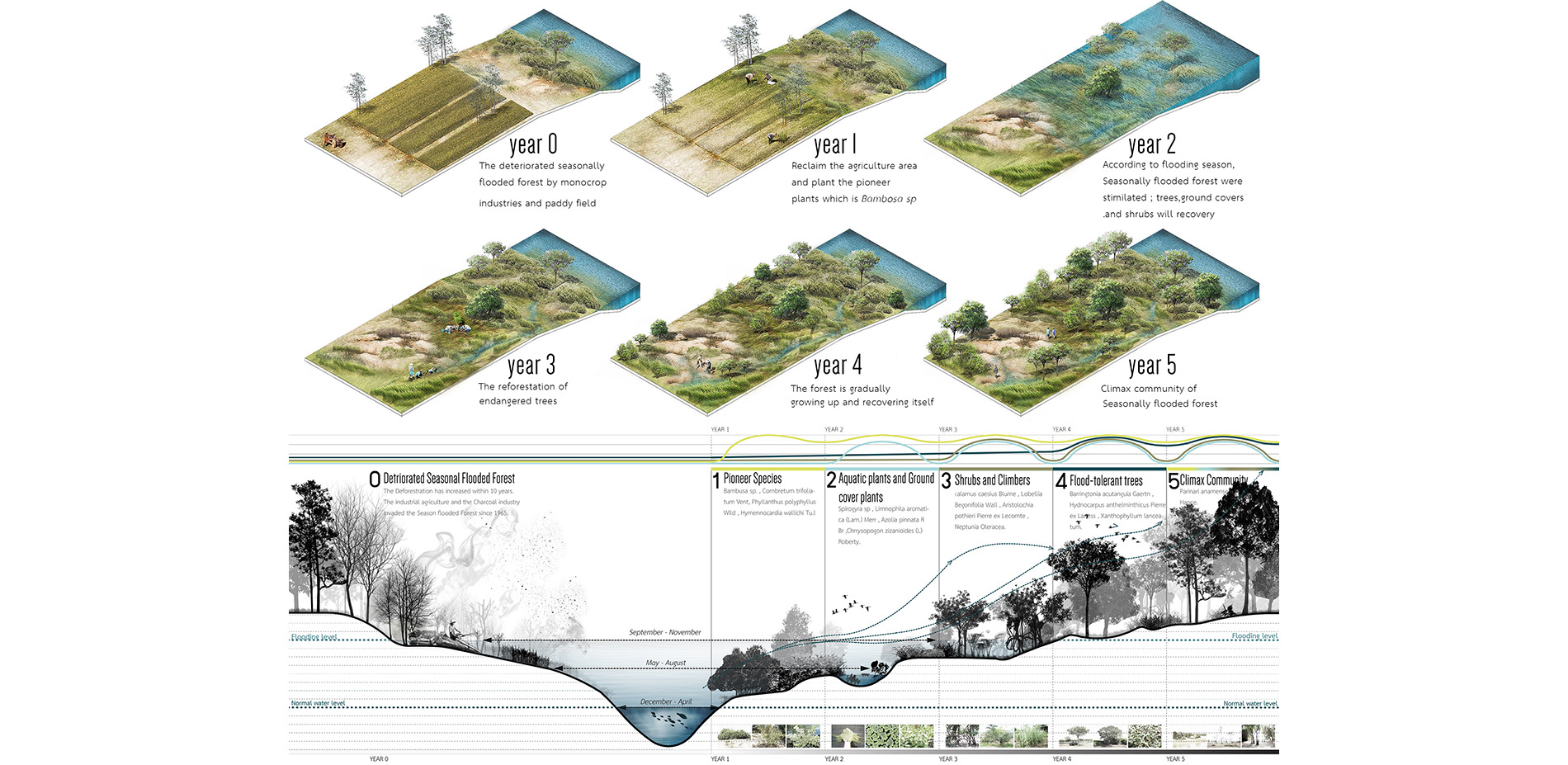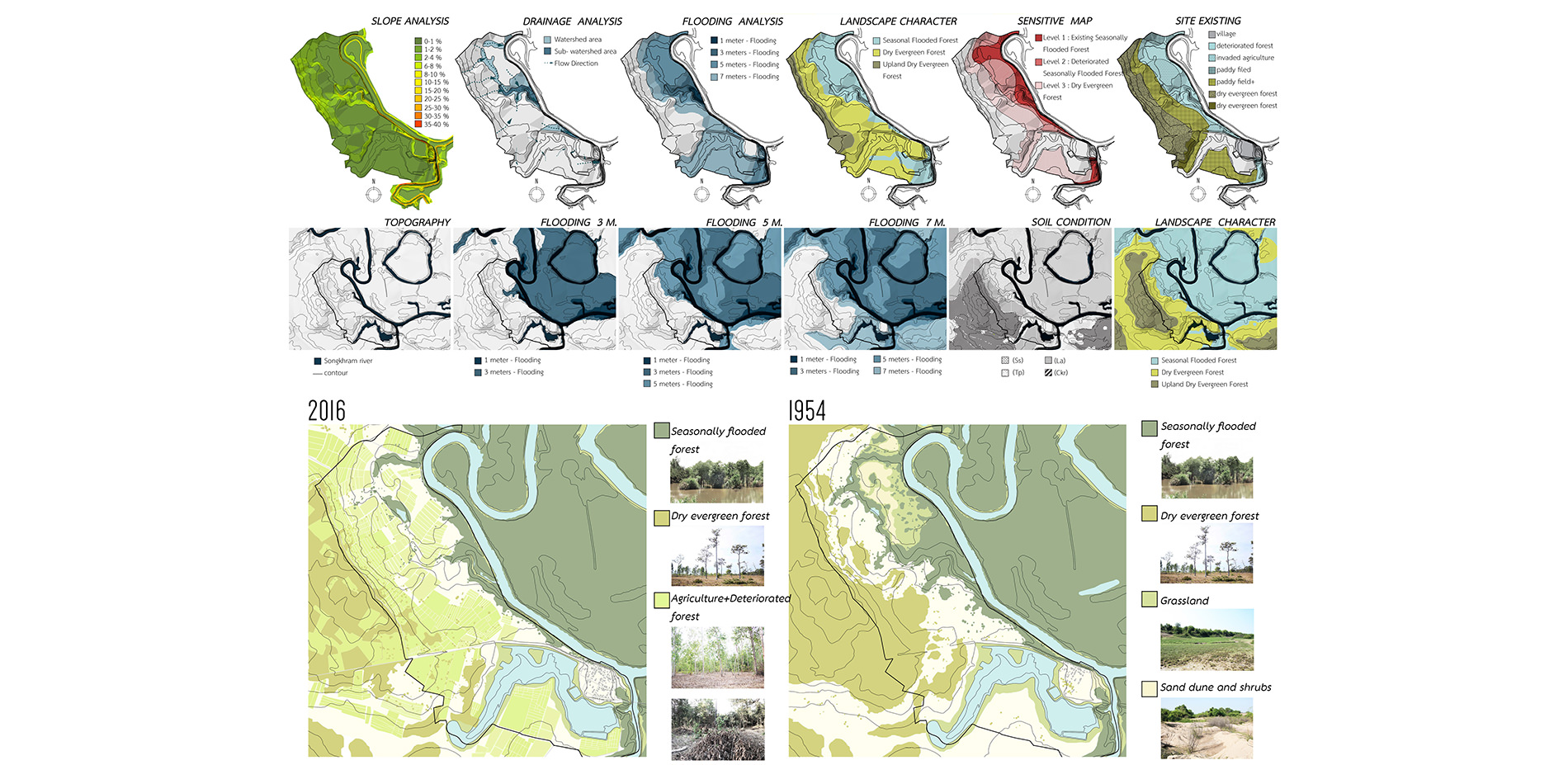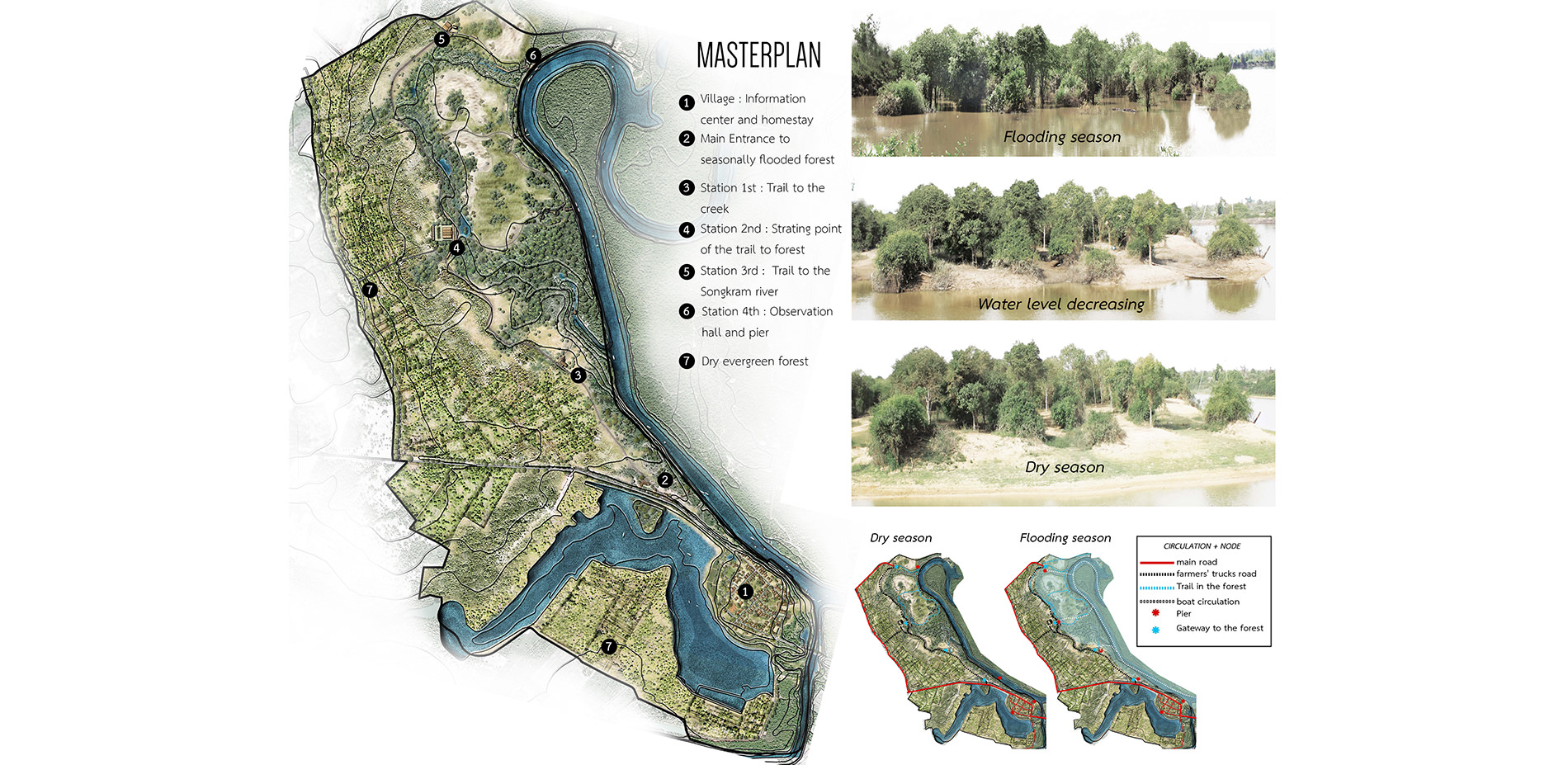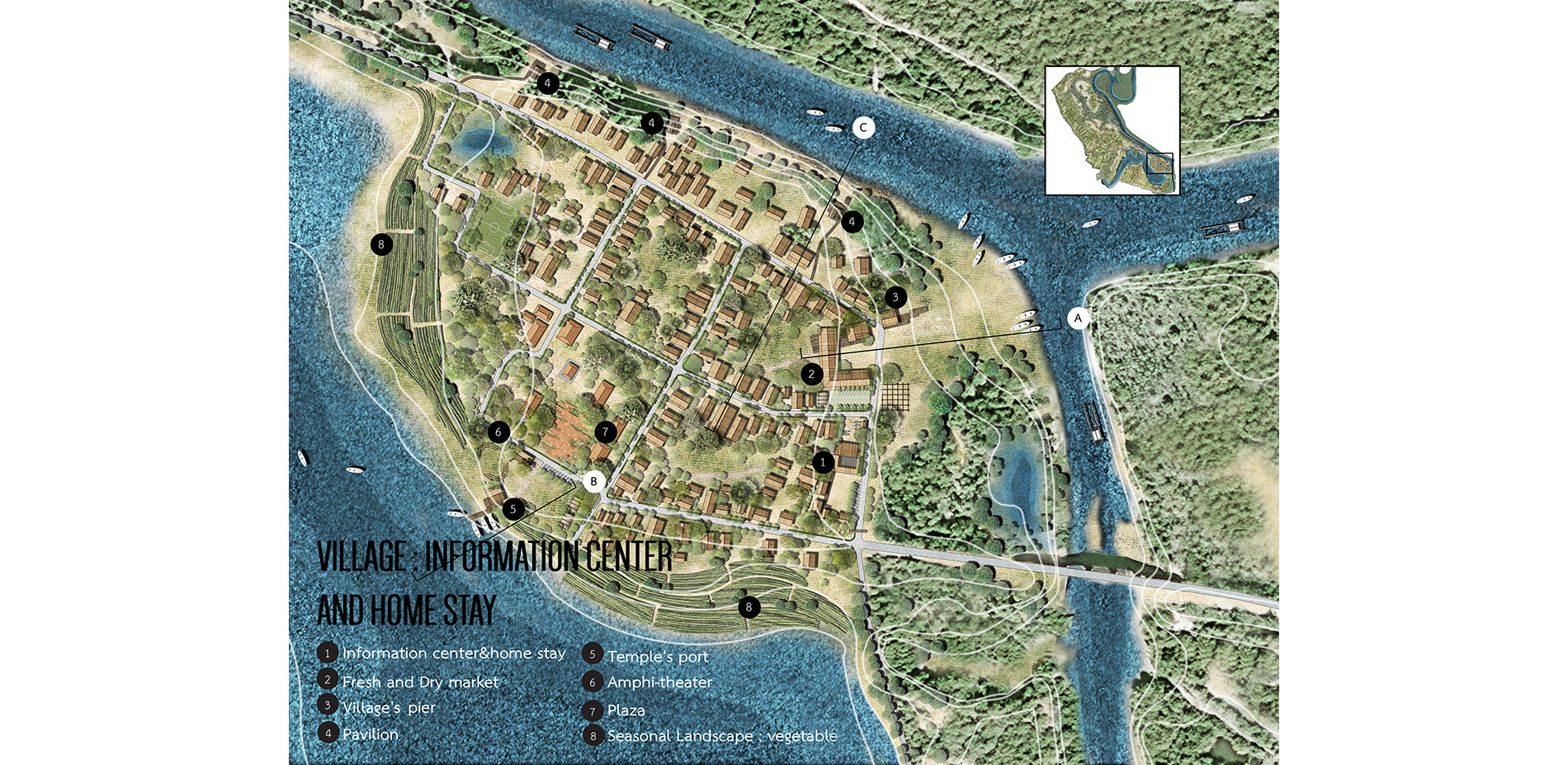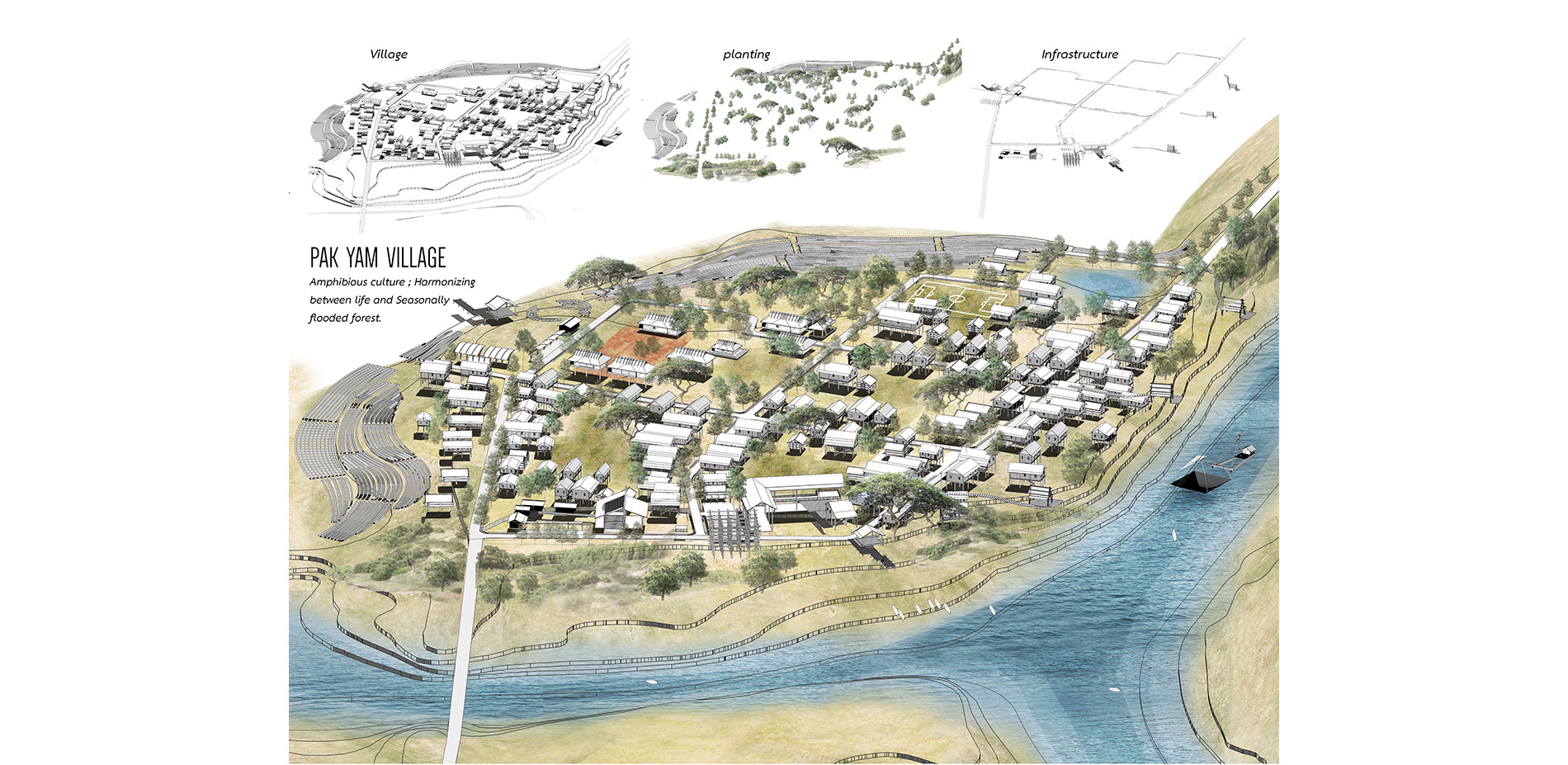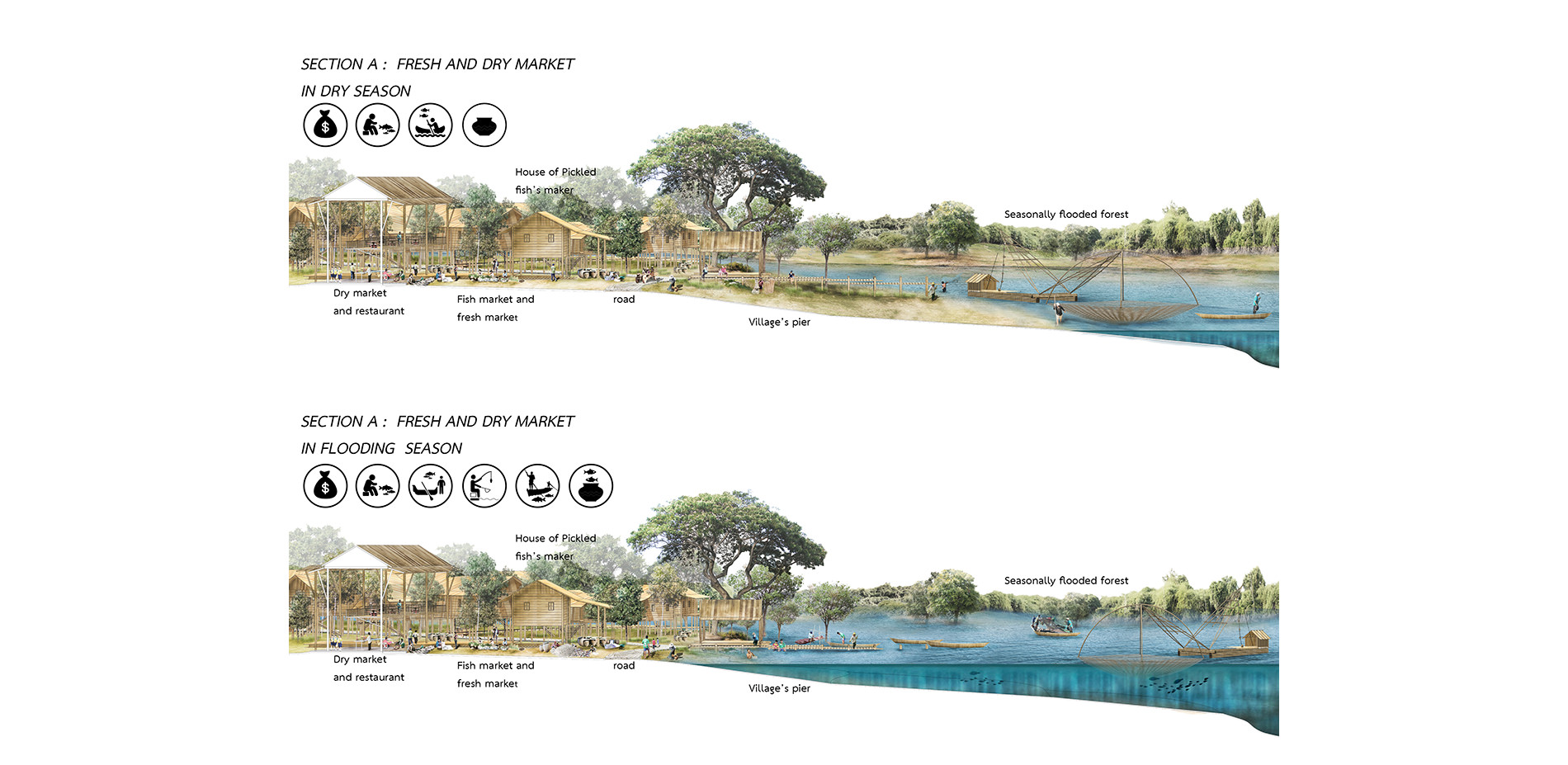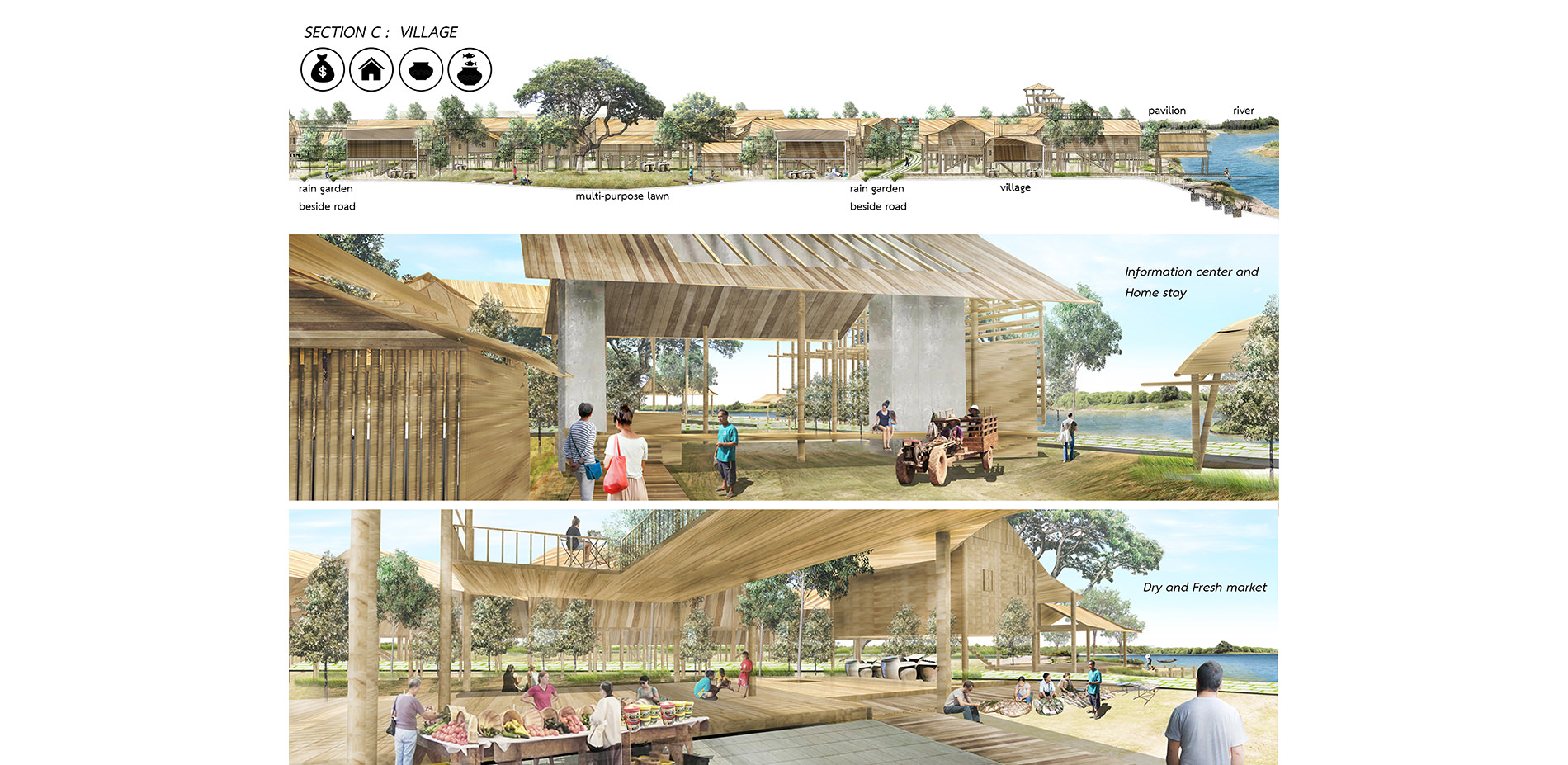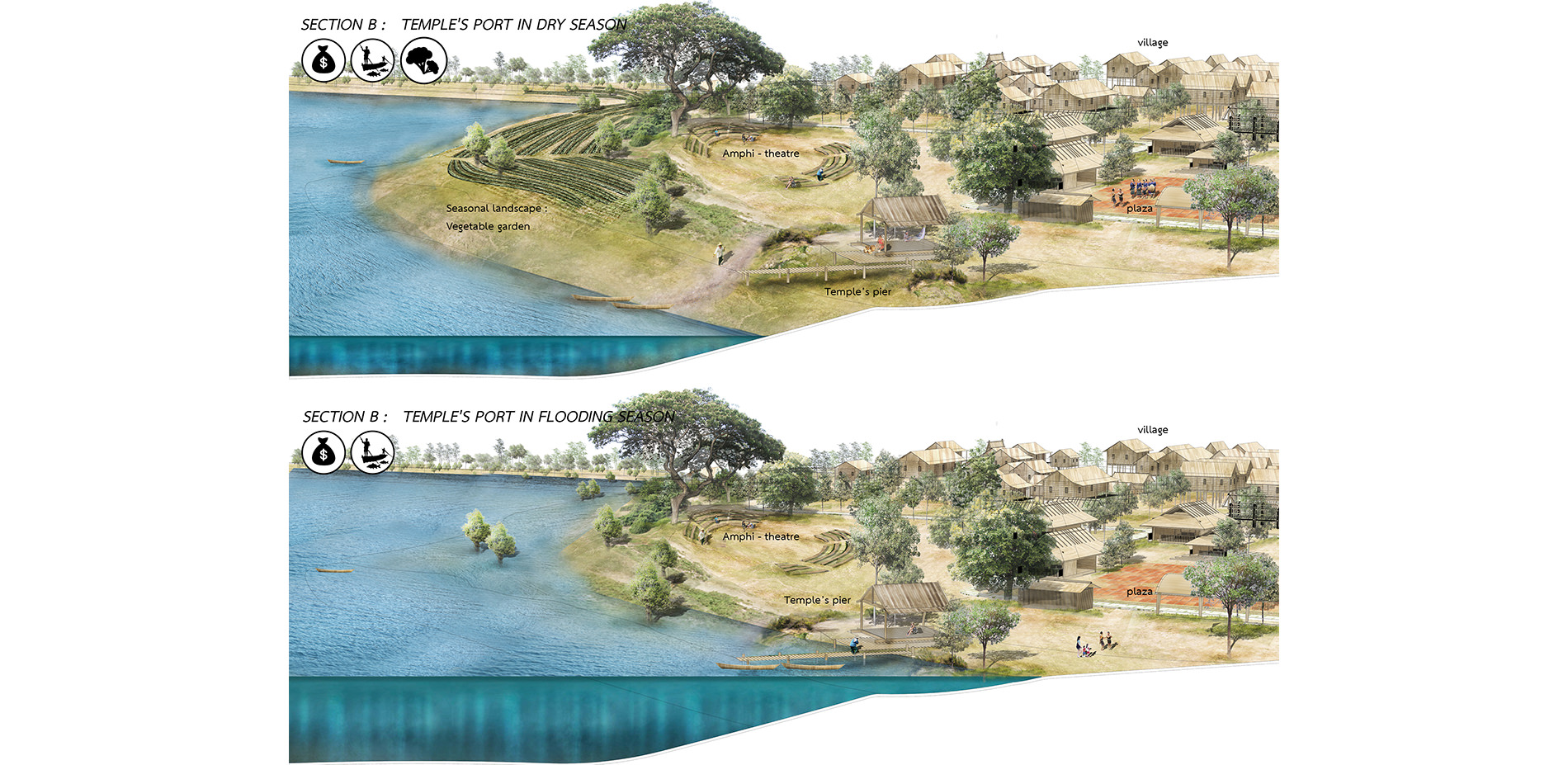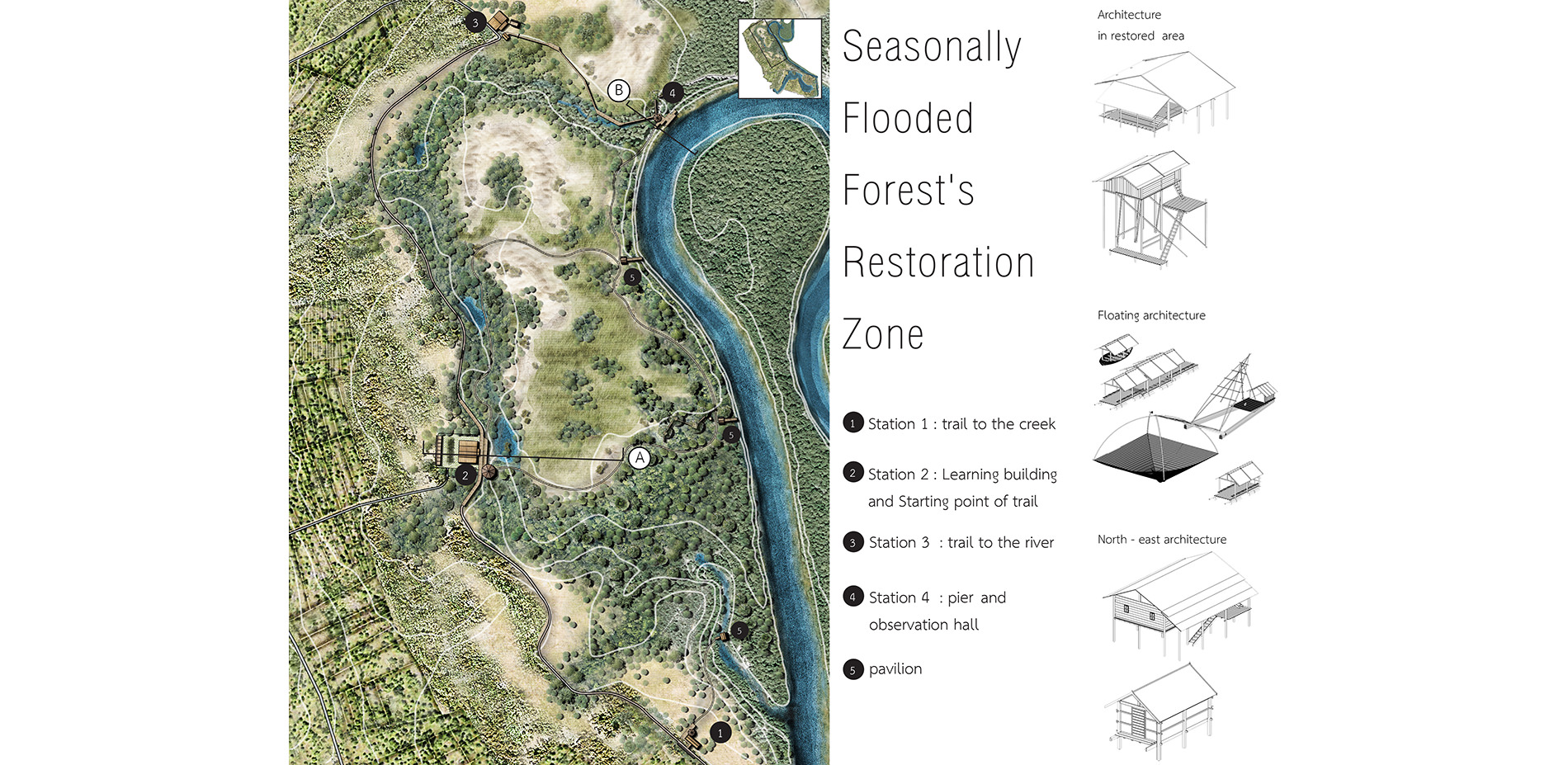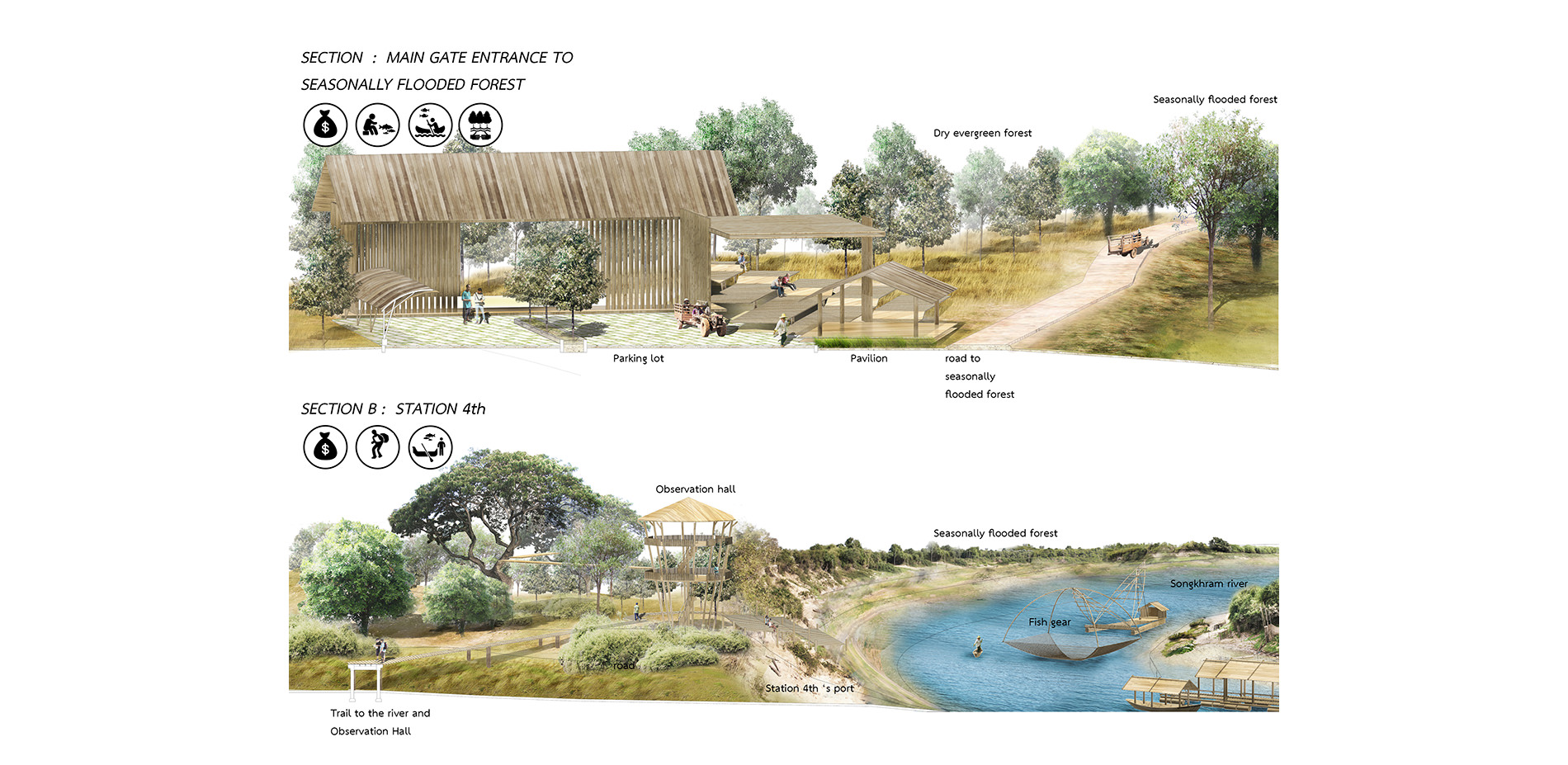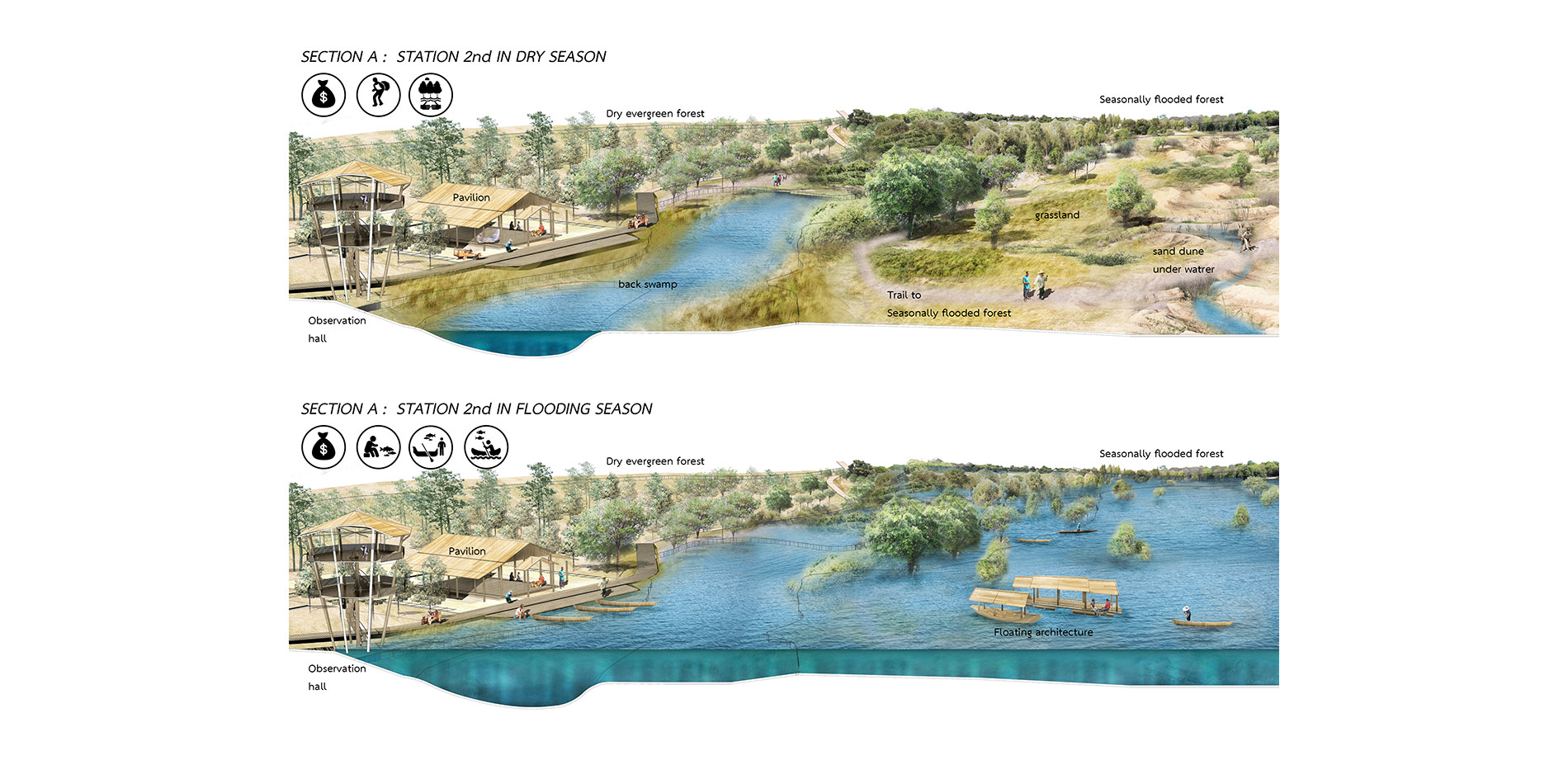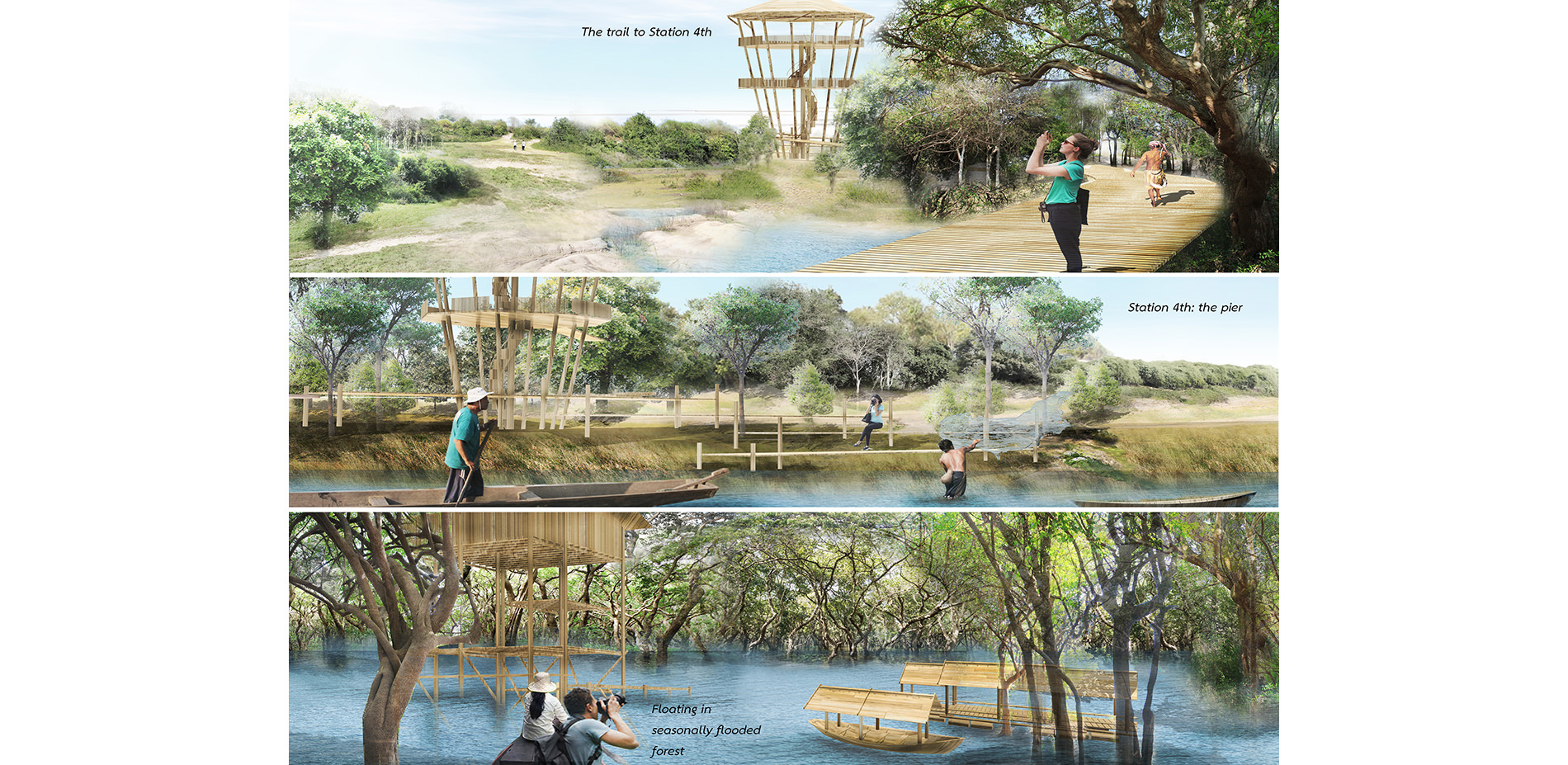PROJECT NARRATIVE
Seasonally Flooded Forest in Pak Yam village area, located beside Lower Songkram river, the project comprises of 994 acres of study area, which emphasizes on the research involves Pak Yam Village (38.4 acres) and designing the knowledge and reclamation center of Pak Yam village, Songkram river (130.4 acres). All of the above leads to total landscape designing area of 168.8 acres. From Nakorn Panom province's development plan, its goal is set to improve and redeem the city's natural and historical attractions in order to become the center of cultural, religious and ecological tourism in Indochina countries. So that the municipal government initiates "The knowledge and reclamation center of Pak Yam village, Lower Songkram basin" project to fulfill the development policy. It's supported by MWBP (Mekong Wetlands Biodiversity Conservation and Sustainable Use Program) as a conservation and sustainable biodiversity usage project of Mekong basin, to generate consciousness in natural resources' preservation and to harness the basin efficiently in the right way.
The Lower Songkram river basin has a distinct ecology system called "Seasonal Forest", which stands for a forest that has to endure 3-4 months of immerse flood annually, serves as an essential nursery ground for aquaculture along Mekong river during drought season, and provides natural and ecological resources through its sediment when the water level decreases. Nowadays, the basin has been vastly destroyed by firewood concession and invasion of capitalists in agricultural industry, also with transforming the area for monoculture which leads to deterioration of ecosystem. Thus, the knowledge and reclamation center of Pak Yam village, Songkram basin (at the Southern part of Nakorn Panom province) aims to develop into the tourist attraction and learning center for people in the province, to raise awareness of the value and how to properly use the basin , and to support ecological and cultural landscape's tourism.
It is divided into 5 main sections which are the knowledge and reclamation center, ecological forestry, homestay area, community's public space and agricultural farm(which has been adapted to suit the basin's context). The planning and designing concept focuses on the flexibility and dynamic of the ecosystem in both rainy and drought seasons. To successfully design the project, it is essentially needed to understand the details of natural process in Songkram basin and other related knowledge in various fields to be integrated into the planning method that could practically reciprocate to both development and conservation at the same time.
Since the policy's purpose is to increase the potential of Thailand's economic and tourism without leaving negative consequences to ecosystem and communities, also to encourage the concerns for awareness of the basin's infinite value and how to preserve it. The expected advantages including 1) To increase local communities’ quality of life by rural infrastructure, generate their income and make them attain sustainable lifestyles. 2) To become a knowledge center of Basin studies, in order to administrate the basin's natural resources and to reclaim and preserve the basin. 3) To provide stability and abundance of the basin's ecosystem, which would benefit positive effects toward human beings.
Purpose planning concept ‘The Adaptable Design’
To place the zoning of the master plan, project has considered the site's potential to locate the most suitable functions for each areas (The community space, The gate to the basin and Basin reclamation space) combined with the living quality development, which resulted in 4 spaces consisted of Access to Ecological space, Social space, Economic space and Socio - Cultural space.
Site’s context leads to the idea of reclaiming basin's intruded areas and developing lifelong quality of people in the community to connect between human beings and nature potentially in social, economic and cultural aspects along with preservation of the basin, which is concluded into "Adaptable Design" with "Dramatically Dynamic landscape" yet the design must keep the identity of vernacular features. The project also aims to develop the community in parallel with the reclamation of the basin, that has given the four requisites to these people who living by the basin over the years, so it's vital to educate them to know its value and be able to maintain the quality of it. Humans and nature should rely on each other, so that, not only focusing on the reclamation alone but the quality of life of people in the community should also be concerned. Apart of the convenient access to the basin, the project generates the income from ecological tourism, seasonal olericulture, fish market, Songkram basin restaurant and homestay business.
‘Restoration and Conservation’
The ecology plays an important role in the design phase, especially the climates that cause an annual seasonal immerse flood. This dynamic landscape forces the design to be flexible in both dry and wet seasons. The design intensively focuses on the joint between the basin and dry evergreen forest (the joint between wet and dry spaces). Lastly, the project's infrastructure must comply the existing environment, which is all rural context. Reclaiming and preserving the basin to constantly be Humans' food resource and Mekong's aquatic nursery, by separating reclamation and preserving areas, providing a learning building and ecological trail. Moreover, three different reclamation methods have been applied into the design.
‘Better Quality of Life’ in the rural landscape
Developing a better Quality of Life is implemented by establishing new infrastructure to support social, economic, ecological spaces and socio-cultural spaces. Social space, four of the stations in Seasonally Flooded Forest are gateway between human and nature which is both welcoming area and recreational area for villagers and visitors. Ecological space, connection between human and their Seasonally Flooded Forest (Community Forest) is created by road from village to forest. Economic space, Fresh and Dry market, Village’s port, Plaza and Amphitheatre is created to be the gathering space and node. Lastly, socio-cultural spaces, created traditional plaza and temple’s port.
‘Education and Eco-tourism’ in Seasonally Flooded Forest
Helping the basin's learning and tourism aspects by adding a village's public relation, a parking lot, a homestay and a pier node, a circulation path using farmers' trucks and boats as the vehicles, a Basin restaurant and fish market for tourists.
